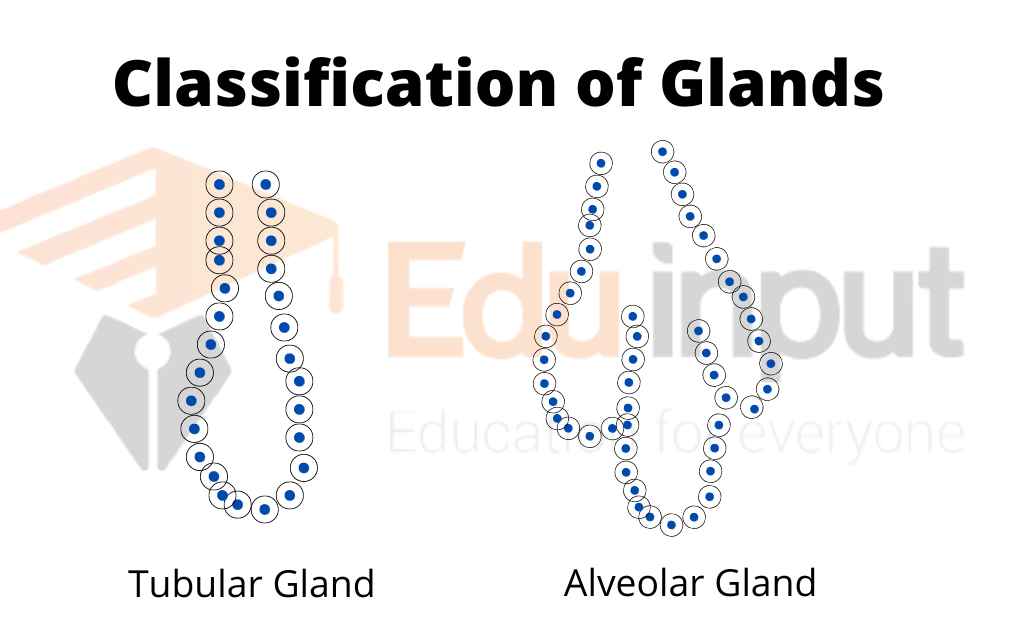What are Glands? Types and Functions
Glands are small organs that secrete chemicals directly into a body cavity or onto the surface of an organ. Most glands have ducts, lined with one or more membranes, that carry the gland’s secretions to their targets. Learn more about some of the most common glands.
Classification of Glands By Their Shape
Glands can be classified by their shape.
- Tubular Gland
- Alveolar Or Saccular Gland
If a gland retains its shape as a tube, it’s called a tubular gland. Alternatively, if the secretory portion of the gland is enlarged and the lumens are increased in size, it is called an alveolar or saccular gland.

Types of Glands
Glands can be divided into two main types:
- Endocrine Glands
- Endocrine Glands
Endocrine Glands
Endocrine glands are responsible for secreting substances that circulate in the bloodstream. These glands secrete their products through the basal lamina into the bloodstream.
Examples Of Endocrine Glands
- Testies
- Ovary
- Pancreas
- Adrenal gland
- Thymus
- Thyroid gland
- Pituitary gland
- Pineal gland
Functions Of Endocrine Glands
Endocrine glands help control many body functions, including growth and development, metabolism, and fertility.
Exocrine Gland
Exocrine glands produce and release substances through a duct and onto either the inner or outer surface of the body. For example, this could be on the skin or gastrointestinal tract. The secretion process occurs directly on the apical surface.
Types of Exocrine Glands
There are three types of exocrine glands, that are:
- Holocrine Glands.
- Merocrine Glands.
- Apocrine Glands.
Secretions Of Exocrine Glands
Exocrine glands secrete sweat, tears, saliva, milk, and digestive juices.
Functions Of Exocrine Glands
It assists in;
- Mucosal protection
- Lubrication
- Lactation
- Helps in reproduction
Examples of Exocrine Glands
It includes a number of glands. Some are enlisted here.
- Sweat glands
- Lacrimal glands
- Salivary glands
- Mammary glands
- Digestive glands in the stomach, intestines, and pancreas.

Difference Between Endocrine And Exocrine Glands
| Endocrine Glands | Endocrine Glands |
| Endocrine glands do not have ducts. | They Have ducts. |
| Secretory products are released directly into the bloodstream. | Secretory products are released to an internal organ or sometimes the external surface through a duct. |
Related FAQs
What are glands?
Glands are small organs that secrete chemicals directly into a body cavity or onto the surface of an organ. Most glands have ducts, lined with one or more membranes, that carry the gland’s secretions to their targets.
What are the types of glands?
There are two types of glands;
Endocrine Glands
Exocrine Glands
What are the examples of Exocrine glands present in human body?
The following glands are present in the human body;
Hypothalamus
Pituitary
Thyroid
Para-thyroids
Adrenals
Pineal body
Ovaries & Testes
What are the functions of glands?
Glands facilitate;
Food digestion
Mucosal protection
Thermoregulation
Lubrication
Nutrition
Lactation
Reproduction





Leave a Reply